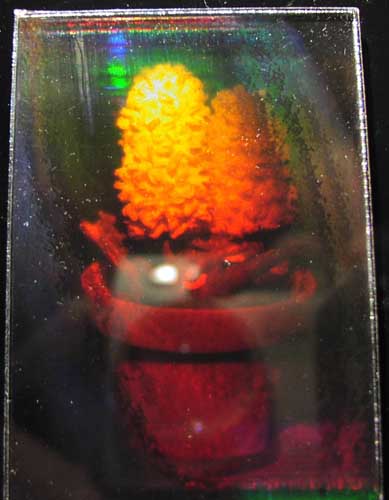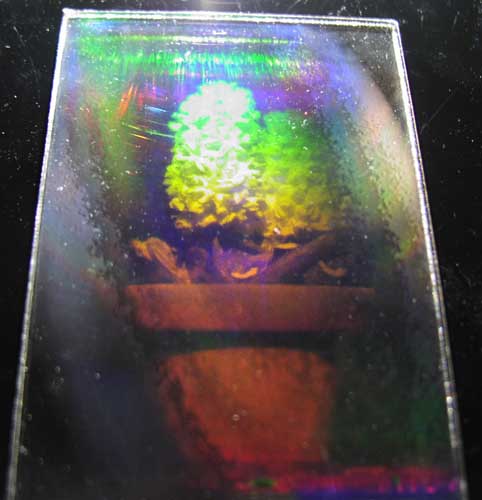| Problem | Solution |
| No Image. | Correcting for a hologram without an image can seem very frustrating. Vibration can cause loss of image. Insure there is nothing that can vibrate the table during exposure. Music, a running fan, drafts, etc. You need to eliminate as much vibration as possible. This most likely is the primary reason holograms do not form. |
| Laser Diode | There are a large variety of 650 nm laser diodes on the market. Is it possible that the particular diode you purchase may not produce a hologram. Two manufacturers sell laser diodes that have already been tested to produce holograms. They are Midwest Laser and Litiholo. |
| Faint Image | Can be cause by light fogging the film. Make sure there are no other light sources other than the laser you are using to expose the film plate. Use your safelight as little as possible, and do not hold it close to the holographic film. Is the holographic film plate orientated properly with reference to the point light source? |
Two Images
There are two images you can view from this hologram, real and virtual.
The virtual image appears correct to the human eye. The parallax and perspective of the image as you move your head is correct. The virtual image is said to be an orthoscopic image, meaning true image.
In contrast to the virtual image is the real image. The real image can be observed by flipping the hologram around. The real image has a few peculiar properties. First the perspective is reversed. Parts of the object that should appear in the rear are in the front and vice versa. When you move your head to the left, the image appears to rotate in proportion to your movement but you see more of the right side not the left side. The brain interprets this paradoxical visual information and causes the image to appear to swing around. The real image is said to be pseudoscopic, meaning false image.
Why It’s A Hologram
As stated in the text. True 3D pictures allows you to rotate a hologram horizontally or vertically to get a different view of the subject. Unlike standard two-dimensional pictures, which when rotated, just create a foreshortening view of the picture.
The following sequence of images shows the view as one changes their vertical perspective of the object.






